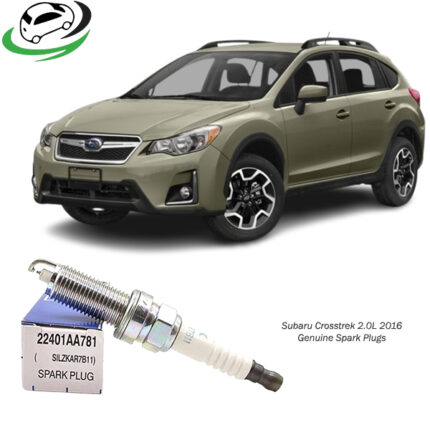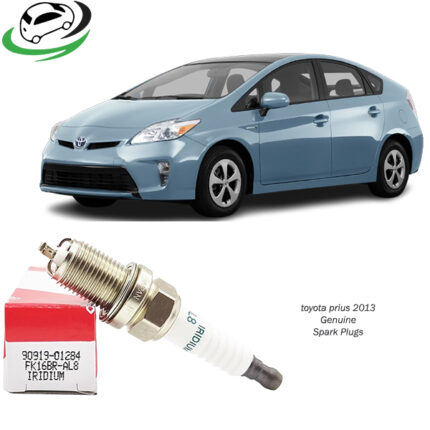Get Subaru Impreza 2015 Engine Oil Pan Drain Plug Gasket 803916010
The engine oil pan drain plug gasket may be a small and seemingly simple component, but it plays a crucial role in the maintenance and health of your vehicle’s engine. This gasket, also referred to as an oil drain plug washer, ensures a proper seal between the oil drain plug and the oil pan, preventing oil leaks during engine operation. Without it, even a small leak could lead to significant oil loss over time, affecting engine lubrication, performance, and, in the worst case, causing engine damage.
In this comprehensive guide, we will explore the function, types, materials, benefits, and maintenance tips for engine oil pan drain plug gaskets, along with their role in engine care.
1. Function of an Engine Oil Pan Drain Plug Gasket
The oil pan is located at the bottom of the engine and serves as a reservoir for the engine oil. The drain plug allows the oil to be drained during routine maintenance, such as an oil change. The drain plug gasket creates a tight seal between the drain plug and the oil pan to prevent oil leakage.
The primary functions of the drain plug gasket include:
a. Creating a Leak-Proof Seal:
The gasket’s most critical role is to form a leak-proof seal between the drain plug and the oil pan. Since engine oil operates at high pressure and temperature, a secure seal is essential to prevent oil from seeping out of the engine.
b. Withstanding Heat and Pressure:
The engine oil operates under extreme conditions, with temperatures reaching several hundred degrees Fahrenheit. The gasket must be able to endure these high temperatures and the constant pressure of the oil flowing through the engine without deteriorating or failing.
c. Ensuring Proper Oil Drainage:
During an oil change, the gasket ensures that no oil leaks occur as the drain plug is tightened. It enables technicians to perform an efficient oil change while keeping the oil pan free from damage caused by over-tightening or improper sealing.
2. Types of Engine Oil Pan Drain Plug Gaskets
Engine oil pan drain plug gaskets come in various types and materials, each suited for specific applications and vehicle types. The most common types are:
a. Flat Metal Gaskets:
Flat metal gaskets are typically made from copper, aluminum, or steel and provide a durable, reusable option. These gaskets are ideal for high-performance vehicles that require a reliable seal and withstand high temperatures and pressure. Copper gaskets are particularly known for their excellent sealing properties and resistance to corrosion.
b. Crush Washers:
Crush washers are made from softer metals like aluminum or copper and are designed to deform slightly when the drain plug is tightened. This deformation creates a tight, leak-proof seal. These washers are often single-use due to the deformation that occurs during installation, making them a common choice for many modern vehicles.
c. Rubber-Coated Metal Gaskets:
Rubber-coated metal gaskets combine the strength of a metal core with the flexibility and sealing properties of a rubber coating. These gaskets provide a good balance of durability and leak resistance. The rubber coating allows the gasket to conform to slight imperfections in the oil pan or drain plug surface, ensuring a better seal.
d. Fiber or Composite Gaskets:
Fiber or composite gaskets are made from materials like cellulose or synthetic fibers and are designed to compress easily for a tight seal. These gaskets are more affordable but may not offer the same level of durability as metal or rubber-coated options. They are often used in older vehicles or lower-performance applications.
3. Materials Used in Engine Oil Pan Drain Plug Gaskets
The choice of material for a drain plug gasket is crucial to its performance and longevity. The most common materials used include:
a. Copper:
Copper is one of the most popular materials for drain plug gaskets due to its excellent thermal conductivity and corrosion resistance. It’s durable and can form a solid seal even under high temperatures. Copper gaskets can often be reused after a thorough cleaning, though it’s recommended to replace them regularly for optimal performance.
b. Aluminum:
Aluminum gaskets are another common choice, offering a lightweight and corrosion-resistant option. They are slightly softer than copper, which allows them to deform more easily and create a tight seal. Aluminum gaskets are generally single-use, as they deform significantly when the drain plug is tightened.
c. Rubber or Rubber-Coated Metal:
Rubber gaskets provide flexibility and a strong seal. They can compress to accommodate irregularities on the oil pan surface, ensuring a leak-proof connection. Rubber-coated metal gaskets combine the strength of metal with the sealing properties of rubber for enhanced durability.
d. Fiber or Composite Materials:
Fiber or composite gaskets are made from materials like cellulose or synthetic fibers. These gaskets are inexpensive and easy to compress, providing an adequate seal in low-pressure applications. However, they may not last as long as metal or rubber options and are typically single-use.
4. Benefits of Using a High-Quality Drain Plug Gasket
Choosing a high-quality, genuine engine oil pan drain plug gasket offers several benefits:
a. Leak Prevention:
A high-quality gasket creates a reliable seal, preventing oil leaks that could damage the engine or lead to performance issues. An oil leak may cause the engine to lose lubrication, leading to increased friction, overheating, and potentially catastrophic engine failure.
b. Enhanced Engine Performance:
Maintaining the correct oil level is critical for engine performance. A properly sealed drain plug ensures the engine oil stays where it belongs, lubricating the engine’s moving parts and keeping it running smoothly.
c. Durability and Longevity:
Genuine gaskets are made from high-quality materials that are designed to last. They can withstand extreme temperatures and pressures without degrading, reducing the need for frequent replacements and ensuring consistent performance over time.
d. Easy Maintenance:
Genuine gaskets make oil changes hassle-free. They ensure the drain plug can be easily removed and reinstalled without the risk of oil leaks or damage to the oil pan.
e. Protection Against Damage:
A high-quality gasket protects both the oil pan and the drain plug from damage caused by over-tightening or misalignment. It acts as a cushion, preventing the plug from being torqued too tightly and damaging the oil pan threads.
5. Maintenance and Replacement Tips for Drain Plug Gaskets
Maintaining and replacing the drain plug gasket during routine oil changes is essential for preventing oil leaks and ensuring the longevity of your engine. Here are some key tips for proper maintenance:
a. Replace the Gasket During Every Oil Change:
While some gaskets, such as copper or aluminum, may be reusable, it’s generally recommended to replace the drain plug gasket during each oil change. This ensures a fresh, clean seal and prevents any wear or deformation from causing leaks.
b. Inspect the Gasket for Wear:
Before reinstalling the drain plug, inspect the gasket for signs of wear, damage, or corrosion. If the gasket appears cracked, deformed, or worn, replace it immediately.
c. Use the Correct Torque Specifications:
Over-tightening the drain plug can damage the gasket or oil pan threads, while under-tightening may result in oil leaks. Always use a torque wrench to tighten the drain plug to the manufacturer’s recommended torque specification, ensuring a proper seal without causing damage.
d. Choose the Right Gasket for Your Vehicle:
Different vehicles and engines require different types of drain plug gaskets. Always refer to your vehicle’s manual or consult with a professional to ensure you’re using the correct type and material of gasket for your engine.
e. Clean the Drain Plug and Oil Pan Surface:
Before installing a new gasket, clean the drain plug and the oil pan surface to remove any debris, old gasket material, or oil residue. This ensures a clean and secure connection, reducing the risk of leaks.
6. Signs of a Failing Drain Plug Gasket
A failing oil drain plug gasket can lead to several noticeable issues:
a. Oil Leaks:
If you notice oil pooling under your vehicle or spots of oil on the driveway, it may be a sign that the drain plug gasket is failing. Even a small leak can lead to significant oil loss over time.
b. Low Oil Level Warning Light:
A low oil level warning on the dashboard could indicate an oil leak, which may be caused by a damaged or worn gasket. Address the issue immediately to avoid engine damage.
c. Visible Oil on the Oil Pan:
If you see oil residue around the drain plug or oil pan, it may indicate a leaking gasket. Regular inspections during oil changes can help catch this issue early.
Conclusion
The engine oil pan drain plug gasket is a small but vital component in ensuring your engine remains properly lubricated and free from oil leaks. Using a high-quality, genuine gasket during every oil change is crucial for maintaining engine performance, preventing leaks, and avoiding potential damage. Regular inspections, proper installation techniques, and choosing the right material for your vehicle will keep your engine running smoothly and efficiently for the long term. Whether you drive a high-performance car or a daily commuter, taking care of this seemingly minor part can have a significant impact on the overall health and longevity of your engine.
Follow us on Facebook for more parts.





Reviews
Clear filtersThere are no reviews yet.